What Do You Spend $5.50 A Month On?
(Editor’s note: Guest poster Kate Stineback is a resident of West Seattle and an affordable housing developer and community organizer at Capitol Hill Housing. More on the housing levy here. )
>>>
Less than $6.00 a month for the typical Seattle homeowner—that’s about 18 cents per day, or $65 a year for the Seattle Housing Levy, on the ballot for renewal this Fall.
Levies have become a common funding vehicle in Seattle for things that deliver widespread public benefit, such as parks, schools, and the Pike Place Market. The Housing Levy has been around since 1981, and every seven years since then, the electorate has chosen to renew it.
You should vote for the Levy because it houses homeless families.
A full 60% of Levy-funded rental apartments are for people and families making less than about $20,000 a year. For these individuals and families, homelessness is often one paycheck away, and many are now finding themselves on the streets for the first time because of the ongoing economic recession. We need the Housing Levy now more than ever.
But maybe you aren’t swayed by this moral argument; maybe you need more convincing. For you, wonky HAC reader, I have the following details…
The Levy saves taxpayers money.
In its first year of operation, DESC’s 1811 Eastlake project saved taxpayers $4 million. By providing permanent housing to 75 formerly homeless chronic alcoholics who were the heaviest users of crisis services (police, fire, hospital), the Levy’s $2.2 million capital investment in this building was leveraged to achieve long-term significant (and ongoing) cost savings for the City of Seattle (and you the taxpayer).
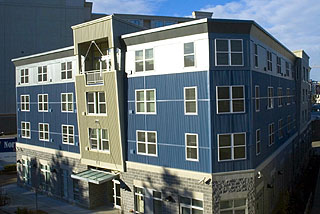
[ 1811 Eastlake, Downtown Emergency Service Center ]
The Levy helps keep affordable projects local.
Ever wonder what it would be like to have the US Department of Housing and Urban Development (HUD) building projects in your community like the one shown below?
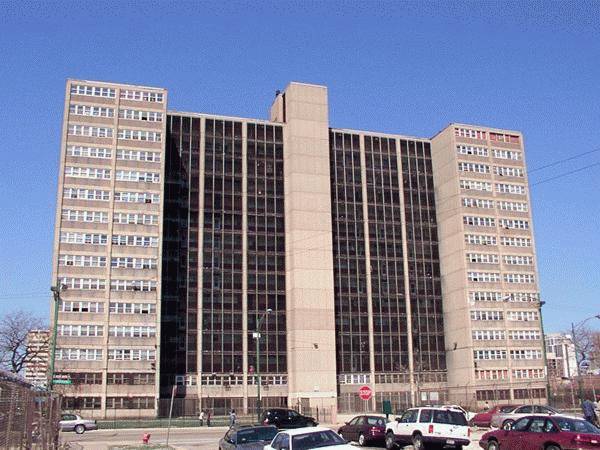
[ Cabrini Green Housing Project, Chicago, Illinois—NOT a Levy funded project ]
Through the Housing Levy, affordable housing development projects in Seattle are kept local, almost entirely built by neighborhood based non-profit organizations. So instead, projects look like this:

[ The Pantages Apartments, Capitol Hill Housing ]
And this:
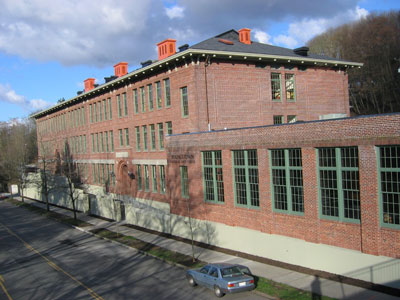
[ The Historic Cooper School, Delridge Neighborhoods Development Association ]
The Levy leverages outside investment.
As a powerful local funding source, the Levy leverages outside public and private investment, mostly through the Low-Income Housing Tax Credit program (the public/private funding mechanism that largely replaced HUD development in the 1980s). In Seattle, every Housing Levy dollar is matched by over $3 in other investment. Check out this pie:
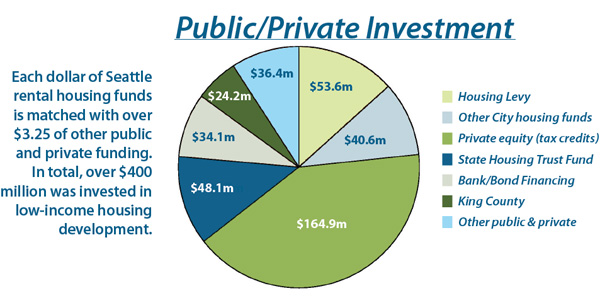
Isn’t it nice to know that your tax dollars are being matched by non-government sources?
The Levy is administered efficiently and effectively.
I don’t know about you, but I also like to know that my taxes are being used wisely. In the 2002 Housing Levy, every production goal has either been met or exceeded, as this chart demonstrates:
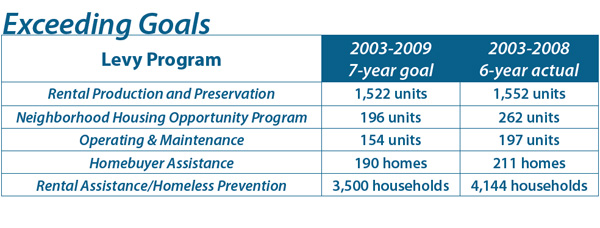
The Seattle Office of Housing, which administers the Levy, is a great example of good government, at a time when government isn’t always so inspiring. It is efficient, transparent and effective.
The Housing Levy is a seven year investment in maintaining the housing affordability and economic diversity of our City. As this blog has highlighted so many times, the mismatch between low-wage jobs and housing affordability is staggering in Seattle. As we grow our public transportation options, and increasingly focus on transit oriented development in land use, it is the Levy that will ensure that future TOD retains affordability at the deepest levels and protects our neighborhoods from becoming enclaves of the very wealthy.
Vote Yes on Proposition 1 this Fall, because the Housing Levy is worth the price of a couple of lattes a month.
